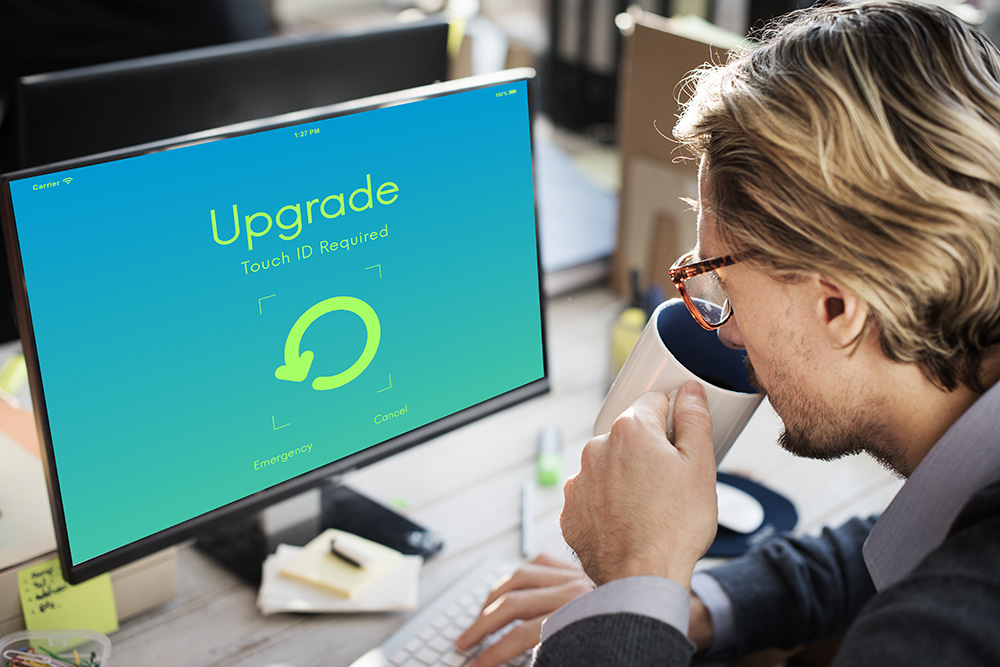
Jan 9, 2020
If you haven’t heard or maybe you’ve been living under a rock for the past year, the looming end of support for Microsoft’s Windows 7 is quickly approaching. Like in 5 days to be exact. So if the fear of being marooned on an insecure operating system still isn’t enough to get you to make the move – we’ve come up with 5 strong business reasons to upgrade to Windows 10 that will deliver real value to your staff and the company as a whole.
Ransomware is the kind of threat that gives IT managers restless nights. Coming in to find the company’s PCs have been locked by rogues demanding a ransom is nobody’s idea of fun.
Windows 10 has beefed up ransomware protection, making an attack much less likely to succeed. The first part of this is the optional controlled folder access. This prevents unfamiliar apps from gaining access to key folders such as Documents and Windows system folders, making it harder for ransomware to surreptitiously encrypt a user’s files.
Ransomware data recovery is also provided by OneDrive, which is baked into Windows 10. Premium OneDrive accounts allow users to recover previous versions of files, meaning that even if the worst should happen, users should be able to turn back the clock and recover encrypted data.
Any IT department will be familiar with the pain of supporting employees who can’t remember their Windows logins. Windows 10 and a generation of new hardware that supports biometric identification makes the pain of forgotten passwords almost vanish.
Windows Hello allows users to log in to their computer using either facial recognition, iris scanning or fingerprint readers. It instantly eradicates the need to remember passwords every time the employee attempts to log in and makes the sign-in process faster. This makes it more likely that employees will lock their system when away from their desk, improving overall security.
Windows Hello is built into Windows 10, but companies looking to roll out the technology will need to make sure that cameras, fingerprint readers and other biometric accessories are Windows Hello compatible.
No employee has installing Windows updates at the top of their to-do list… which is why you’ll occasionally hear yelps of despair when an employee steps away from their desk for ten minutes to find that Windows has applied an update in their absence, taking all their unsaved work with it.
Update management has been vastly improved with Windows 10. First, any restart to apply an update will be applied outside of the default ‘active hours’ of 8am to 5pm, unless otherwise specified. IT admins can set updates to be applied at a specific time so as to avoid any unnecessary disturbances. Users are now also given clear warnings when updates are pending, avoiding the shock of returning to your system to find an update has been automatically applied.
Updates should also be applied more quickly thanks to the new Unified Update Platform. This vastly reduces the download size of update files, containing only the changes that have been made since the last update rather than downloading an entire new build. That means less load on the company network and less time until employees get essential updates.
Virtual desktops allow employees to create different desktops for different purposes, so the ability to run multiple versions of Windows 10 within Windows 10 is another feature that will be super helpful to you team. For example, a member of the sales team might have one desktop that contains the company’s CRM app, PowerPoint and Skype, so that they can focus on chasing leads. On a separate desktop, they may have a web browser, Microsoft Teams and email for times when they want to focus on team communication.
It’s easy to flip between the two different desktops – you simply press the Task View button next to the search bar or use the Windows + Tab keyboard shortcut. Virtual desktops let staff keep their focus where it needs to be, rather than constantly flitting between different tasks.
There are times when we’ve all clicked on links we’re not sure about or visited web apps that we can’t be 100% sure are trustworthy. Windows Defender Application Guard provides a safe way for staff to access risky sites without compromising the rest of their PC.
This optional feature allows you to create a new Application Guard window from within the Edge browser – it’s marked with a little shield in the taskbar, so that you can be sure you’re in a safe browsing environment. Application Guard acts as a container that’s totally separate from the rest of the PC – anything you access in that browser window cannot infect the rest of the PC.
Whether your office is running on Windows 7 or 8, do not wait on either operating systems and make the plans to switch now. Your employees, your IT staff and your executives will thank you for avoiding the pitfalls of outdated office tech and praise you for guiding the company to higher productivity.
To stay up-to-date on the latest office tech tips, check out our most recent blog posts and subscribe to our email alerts.